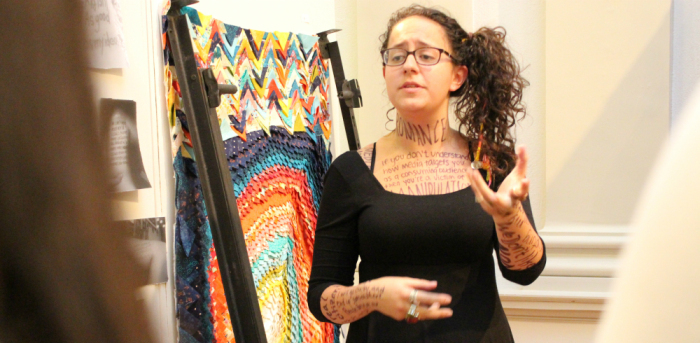Have you ever found yourself wondering how to best respond to a text message? Should you use a smiley made of a colon and a parenthesis or an actual smiling emoji? Or opt for no emoticon at all? Is more than one exclamation point necessary? If this sounds like you, you might want to opt to take a new SIS offered this fall, “The Art and Rhetoric of Texting.”
Professor Frances Wyndham will be teaching the course. She said she noticed some of her students routinely agonizing over exactly the right things to say when texting and realized she could help.
“I have students ask, ‘Do you think I should use proper punctuation when texting this person? If I use too many ellipses, will they think I’m moody?’ There’s a lot more that goes into texting than people would believe,” Wyndham said.
The course will focus on language techniques, social contexts that surround various issues of communication, and even on the history and evolution of technology.
“I’m especially excited to teach about gendered aspects of this. The common stereotype is that girls talk – and therefore, text – more than guys do. Studies have shown this simply isn’t true,” Wyndham explained. “Additionally, we will analyze and see if certain texting tricks – from acronyms to emoji usage – are more common among one gender or another. Sometimes students will even ask me why the people they are interested in will neglect to use the heart emoji as often as they do. Hopefully this course can shed some light on that.”
When informed about this SIS, first year student Alicia Valerio was immediately interested. “Maybe this will explain why my mom will only ever use ‘2’ for ‘to,’ ‘too,’ and ‘two’,” she said. “I mean, it’s not like I’m consulting Strunk and White every time I text, but come on. The stereotype is that kids text poorly and adults have perfect grammar – that just couldn’t be farther from the truth.” Wyndham said that the course will in fact spend some time looking at some of the demographic trends within texting in addition to discussing dominant discourses that shape stereotypes behind how certain age groups text.
When asked about whether the course would veer into the territory of sexting, Professor Wyndham stated that it was “in the realm of possibility.” She went on to say, “We may, um, at some point throughout the, uh, semester, touch upon the rhetoric of, um, shall we say, amorous communication.” She was quick to dispel any notion that the class would become a lecture on how to sext.
Regardless, as soon as junior Sam Patterson heard about the course, he said, “I gotta take that. Man, that would… I mean, girls, usually, they uh, do not respond well to my kind of texts. I’m glad McDaniel is willing to help me with that.” When asked about whether it was truly necessary for him to take an SIS as a senior, Patterson declined to comment.





